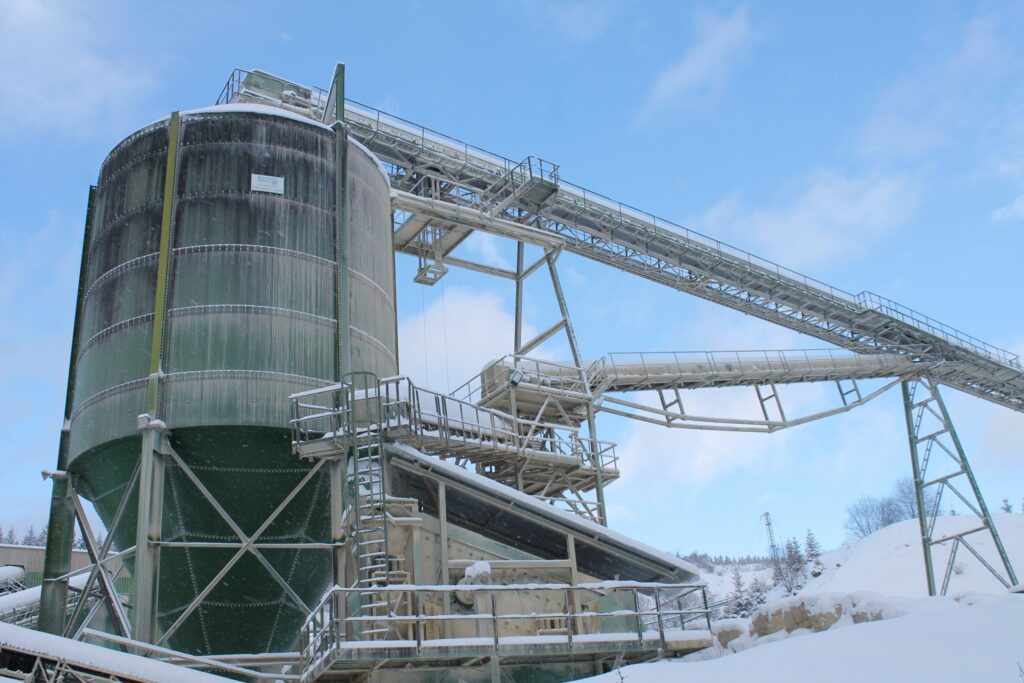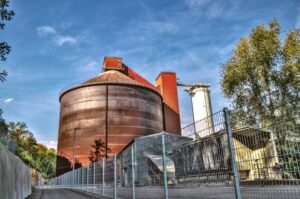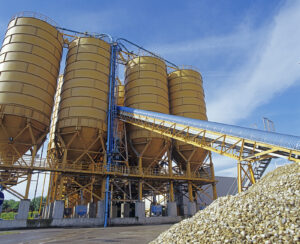
Cement Silo Cleaning Plays a Meaningful Role in Maintenance
Cement silo cleaning is a first-line defense for concrete and construction companies looking to keep the tools they rely on healthy, their dry material ready for the work to come and their crews ready to roll. Even so, it’s a maintenance step many companies overlook.
You see, unlike ready mix concrete trucks and central mixers which have wet material moving through them on a consistent basis — and see buildup accumulate fairly quickly — the effects are less obvious for a cement silo. While mixers in need of maintenance often display warning signs such as halts in a drum’s spin or visible buildup, for cement silos, a slower-than-usual pour can be the only sign that issues might be taking shape inside.
Preventative maintenance such as cement silo cleaning is crucial to ensure a long lifespan for the tools your team relies on, and to enable crews to carry out the work your clients have hired you to do. Here are a few factors to consider when working cement silo cleaning into your maintenance schedule.

Cement, Moisture and the Reasons Silo Maintenance Matters
Why do your cement storage silos require regular maintenance even though there’s no wet material moving through them? It’s all about your dry cement, moisture that makes its way inside — and the harmful effects that combination brings.
Clumps and clogs are the main concerns related to the combination of cement, moisture and time. Once moisture reaches your dry material, it can become difficult — if not impossible — to release the cement from the bottom of your silo. And there are a number of ways that moisture intrusion can happen.
- The first way moisture can reach your dry material is through cracks and holes in your cement storage silo. Whether those openings are due to damaged vents, natural wear and tear, corroded metal or another issue entirely, even small vulnerabilities can result in big issues.
- Another less obvious form of moisture entry relates to humid outdoor conditions. After heavy rains, or in naturally humid climates, condensation tends to build up along the inside of your cement silo walls. If your silo’s internal temperature is markedly warmer than your area’s outdoor conditions, it can have a similar effect. When the moisture accumulates and falls into the dry cement, clumps and clogs begin to form.
It’s important to note that clumped material and all-out clogs aren’t the only concern moisture brings into the mix. There are a number of risks that come into play for the silo itself when cement moisture makes its way in. Particular risks will vary depending on the material from which your cement storage silo is constructed. Steel silos, for instance, sit at a higher risk of corrosion than other silo varieties do, and excess moisture speeds that process along. Allowing intruding moisture to remain inside unaddressed can lower your silo’s overall lifespan, lead to wasted material and result in costly silo repairs and replacements.

How Often Should You Book Cleanings for Your Cement Plant Silo?
Although your cement plant silo might not require maintenance as frequently as your ready mix concrete drums and central mixers, we suggest having professionals give them the once-over anytime you plan to switch out the material stored inside. Of course, we also suggest cleanings anytime you experience a clog. As a general rule of thumb, our industry recommends booking cement plant silo cleaning, central mixer cleaning and concrete chipping every three months.
Why carry out silo cleaning quarterly? Your concrete chipping company isn’t trying to get you to pay for a service you don’t really need. It’s trying to look after your system as a whole. Remember, isn’t enough to simply ensure your mixing drums are ready and able to take on your next project. If there’s no material for them to mix, they won’t do you much good.
By putting a bit of forethought into your silos ahead of time, you’ll save yourself a world of headaches down the road — and sidestep issues such as unexpected clogs that grind work to a halt and eat into your bottom line when expensive repairs and replacements needs arise.
How Does Cement Silo Cleaning Work?
Much like concrete drum chipping services, cement silo cleaning involves team members physically entering your silos to carry out a thorough evaluation, locate clumped material and then take steps to right any issues they see. These trained professionals enter from above and break hardened cement into chunks that can be ushered down and out of your silo. At the same time, they leave healthy cement untouched, ready for your team’s future use.

What Else Should You Know About Cement Storage Silo Maintenance?
We’ve covered the why and even touched on the how. Now, it’s time to talk about additional considerations to factor in when planning out your cement storage silo cleaning work.
- Cement Silo Cleaning Should be Left to the Pros: Although cement storage silo maintenance might seem simple enough, it carries its share of risks. Untrained crew members who attempt to clear clogs from beneath a silo using broom handles or similar tools risk injury or death due to falling debris. Additionally, an untrained team member approaching the work from the top of a cement storage silo faces fall hazards — either toppling into the silo, where he or she could become buried, or down to the ground. Asphyxiation concerns also pose a very real threat. Put simply, you should never trust silo cleaning work to anyone who isn’t specifically trained to do it. At General Chipping, our silo cleaning experts are armed proper PPE, ongoing OSHA safety training and continuing education to ensure they’re always taking the work on in the safest, most efficient manner possible.
- We Recommend Booking Cement Silo Cleaning Well in Advance: Although concrete chipping companies work year-round, certain seasons are busier than others. When it comes to cement silo cleaning, many companies’ schedules remain pretty packed from February through May. Appointments are available, but scheduling may take a bit longer than in the “off” season. To sidestep delays, consider booking an entire year’s worth of maintenance out at once — ideally at times that coincide with your concrete chipping appointments. By inviting professional concrete chippers out four times per year to evaluate and maintain your cement storage silos, you’ll avoid headache-inducing clogs that throw your schedule off course.
- Have a Plan in Place if Trouble Arises: Slowdowns and breakdowns are bound to happen — even for companies that follow maintenance schedules to a T. Unseasonably humid outdoor conditions lead to clumping and clogging, for instance, while certain cement blends are more prone to trouble. It’s important to know who you can turn to when the unexpected occurs. At General Chipping, we provide 24-hour emergency assistance to help companies get back to work quickly, and we carry out our work nationwide. We encourage every concrete and construction company to keep a list of emergency contacts at the ready in case you need to get in touch. (Don’t forget to include us on that list!)
We hope the above helped to shed some light on the important role cement silo cleaning plays in overall maintenance — and offered some insights into ways you can keep to a healthy maintenance schedule moving forward. If you have questions on any of the above, or if you’re interested in booking our concrete chipping company, feel free to reach out. We’d love to help!
